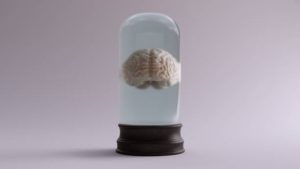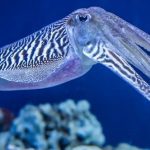 History
History  History
History  Animals
Animals Ten Times It Rained Animals (Yes, Animals)
 Mysteries
Mysteries 10 Devastating Missing Child Cases That Remain Unsolved
 Creepy
Creepy 10 Scary Tales from the Middle Ages That’ll Keep You up at Night
 Humans
Humans 10 One-of-a-kind People the World Said Goodbye to in July 2024
 Movies and TV
Movies and TV 10 Holiday Movies Released at Odd Times of the Year
 Politics
Politics 10 Countries Where Religion and Politics Are Inseparable
 Weird Stuff
Weird Stuff 10 Freaky Times When Famous Body Parts Were Stolen
 Miscellaneous
Miscellaneous 10 Interesting Things Manufacturers Stopped Making and Why
 Gaming
Gaming 10 Funny Tutorials in Games
 History
History 10 Desperate Last Stands That Ended in Victory
 Animals
Animals Ten Times It Rained Animals (Yes, Animals)
 Mysteries
Mysteries 10 Devastating Missing Child Cases That Remain Unsolved
Who's Behind Listverse?

Jamie Frater
Head Editor
Jamie founded Listverse due to an insatiable desire to share fascinating, obscure, and bizarre facts. He has been a guest speaker on numerous national radio and television stations and is a five time published author.
More About Us Creepy
Creepy 10 Scary Tales from the Middle Ages That’ll Keep You up at Night
 Humans
Humans 10 One-of-a-kind People the World Said Goodbye to in July 2024
 Movies and TV
Movies and TV 10 Holiday Movies Released at Odd Times of the Year
 Politics
Politics 10 Countries Where Religion and Politics Are Inseparable
 Weird Stuff
Weird Stuff 10 Freaky Times When Famous Body Parts Were Stolen
 Miscellaneous
Miscellaneous 10 Interesting Things Manufacturers Stopped Making and Why
 Gaming
Gaming 10 Funny Tutorials in Games
Ten Astonishing New Discoveries about the Brain
The brain is an incredible thing. There are all sorts of wild and wonderful things happening up there in the cranium. The realm of neuroscience is a fascinating one, with researchers uncovering more about the brain by the day. The intricate inner workings of the mind are still a mystery. But each new discovery—whether that be implants for OCD, psychedelics for PTSD, or VR goggles for mice—teaches us a little more about the grand enigma that is the brain.
Related: 10 Awesome New Discoveries About the Human Past from DNA
10 Scientists Keep a Pig’s Brain Alive outside Its Body

Researchers at the University of Texas’s Southwestern Medical Center have created a machine that can keep a pig’s brain alive outside of its body. The system uses a specially designed pump to supply blood to the porcine mind. An algorithm monitors factors like blood pressure, flow, and pulsatility. The machine can also adjust the supply, like how circulation works in the body.
So far, scientists have kept an isolated pig’s brain going for five hours with little change in activity. They hope their experiments will provide new insight into the workings of the brain. As one of the lead researchers, Dr. Juan Pascual, wrote in a statement, “This novel method enables research that focuses on the brain independent of the body, allowing us to answer physiological questions in a way that has never been done.”[1]
9 Psychedelic Drugs Used to Treat Trauma in Veterans
When soldiers retire, their wounds aren’t always physical. Many come home with PTSD and traumatic brain injuries (TBIs). Treatment can be a challenge. But now scientists at Stanford University have discovered a new, unlikely avenue for treating traumas: psychedelic drugs.
The researchers looked into the effects of ibogaine, a mind-altering substance used by West African shamans. They found that one dose of ibogaine led to a long-term boost in the cognition, mood, and social functioning of veterans with TBIs.
Their experiment focused on 30 ex-soldiers, all of whom had suffered mild-to-moderate trauma. The veterans took part in a five-day treatment at a facility in Mexico. They were offered therapy, yoga, meditation, and, of course, ibogaine. A month later, 83% of participants had no diagnosable disability.
The Stanford team’s findings are remarkable. They pave the way for new forms of neuro-rehabilitation. The scientists must now unravel how much of the improvements were due to the drug. Did other factors like therapy and wellness activity feed into the veterans’ recovery?[2]
8 Tiny VR Goggles for Mouse Brain Research
Strange as it may seem, scientists at Northwestern University have developed virtual reality goggles for mice. The miniature headsets allow researchers a deeper insight into the workings of rodent brains.
Previously, scientists would use computer screens to create a simulated environment for mice. But there were limitations. The screens only created a 2D reality and wouldn’t fill the whole field of vision. These goggles suffer from none of those setbacks, opening up new avenues for neurobiological research.
The Northwestern team tested the headset by simulating a bird attack from above. Their setup allows them to study how rodent brains respond to the threat of a predator in real time. And they’re already making plans about what to simulate next.
“In the future, we’d like to look at situations where the mouse isn’t prey but is the predator,” explained John Issa, one of the developers of the rodent headset. “We could watch brain activity while it chases a fly, for example. That activity involves a lot of depth perception and estimating distances. Those are things that we can start to capture.”[3]
7 Brain Implant Helps Treat OCD and Epilepsy
Amber Pearson suffered the crippling effects of OCD. The 34-year-old American worried so much about contamination that she would scrub away at her hands until they bled. Since she was a teenager, her obsessive rituals and fears could last as much as eight or nine hours a day. Pearson was also affected by epilepsy.
But these debilitating rituals and seizures are now a thing of the past thanks to a groundbreaking brain implant. Scientists have used tiny devices in the cranium before to treat OCD and epilepsy separately. But Pearson is the first case where the two conditions are combined into one treatment.
The implant works using specialized, deep-brain electrical impulses. Essentially, it zaps the intrusive thoughts away. Now, Pearson’s rituals only take up half an hour. Her terror around eating in groups has disappeared. “I’m actually present in my daily life, and that’s incredible,” she told reporters from Agence France-Presse. “Before, I was just constantly in my head worrying about my compulsions.”[4]
6 New Discoveries about Alice in Wonderland Syndrome
Alice in Wonderland syndrome (AIWS) is a rare and bewildering phenomenon. The disorder, named after the famous Lewis Carroll novel, causes people to judge the size of things incorrectly. Sufferers can feel as if they have shrunk or grown or that nearby objects are the wrong size. There are only around 170 known cases, but scientists are still baffled as to its origins.
But experts hope that a 2024 study could take them one step closer to finding a solution. The recent experiment centers on what is known as lesion network mapping. Researchers compared brain scans of people with AIWS to brain scans from healthy people and people with other neuropsychiatric disorders. They found that over 85% of the AIWS brains had lesions affecting two specific areas: the visual processing region and the region involved in judging size.
It’s still early days for the research. That said, scientists are hopeful that further study of the two areas could help them unravel this extraordinary disorder.[5]
5 Elon Musk’s Human Brain Implant
Elon Musk is famed for his far-flung, often controversial scientific projects. On January 29th, 2024, the notorious billionaire posted on X/Twitter that his company Neuralink had implanted a chip into its first human brain.
Musk didn’t give much away about the experiment. His post told followers that the subject is “recovering well.” He also explained briefly that the chip is picking up spikes of electrical activity. These are caused by neurons whizzing around the cranium.
The main goal of Neuralink is to create an interface implant that allows people to use their minds to control devices. However, the project has come under fire for accusations of animal cruelty. In 2023, the PCRM complained about severe harm caused during previous trials on macaques. That same year, the Department of Transport fined Neuralink for its poor handling of hazardous chemicals.[6]
4 Widespread Brain Scan Study Unearths ADHD Patterns
Researchers in the U.S. have made a remarkable discovery about brain patterns in people with symptoms of neurodivergence. The team examined the brain scans of 6,000 children and found patterns associated with attention deficit hyperactivity disorder (ADHD).
They found that certain regions of the brain showed different behaviors and changes in blood flow in people with ADHD symptoms compared to those without. These patterns showed up strongest in the networks that are most active when the brain is resting. They were also seen in the cingulo-opercular network. Attention and cognitive control often involved areas of this network.
These findings bring scientists a step closer to understanding the basis of ADHD and aiding in improved treatment. Early diagnosis of ADHD is often hugely beneficial for the patients and their families. According to a 2015 study, people who aren’t diagnosed until adulthood are four times more likely to die early than the average adult.[7]
3 Could Changing Genes Help Fight Addiction?
Alcohol doesn’t just alter your behavior. Long-term abuse can distort the pathways in your brain, altering your genes. A recent study based on animal models found that substances like alcohol and drugs can change how genes are expressed in the brain. In particular, in the regions linked to memory and response to rewards.
But these changes don’t have to be permanent. See, it’s not just booze that alters the genes in your mind—medication and lifestyle can, too. Evidence has shown that mental health drugs like antidepressants and mood stabilizers can affect DNA and brain function, as can dietary changes, meditation, and exercise.
Understanding how alcohol disrupts our genes is a key task in coming up with new ways to combat addiction and help people regain control over their lives.[8]
2 Marmoset Twins Swap Brain Cells
Strange as it may seem, marmoset twins swap brain cells during development. The extraordinary discovery comes courtesy of researchers at Harvard. They found evidence of what’s known as chimerism—where a body contains DNA from two separate sources.
When twin mammals are in the uterus, they share a circulatory system via the mother’s placenta. This means developmental stem cells can pass from one twin to the other. Chimerism takes place across the animal kingdom, including in humans, but marmosets are a special case. The small primates usually give birth to non-identical twins or triplets. And yet, due to chimerism, up to 80% of a marmoset’s blood cells can originate from their twin.
And it goes further than blood cells. Those shared stem cells could go on to become reproductive cells. Evidence suggests that marmosets can carry egg and sperm cells from their siblings. The scientists found evidence that suggests the swapping of brain cells—in particular, repair and regulation cells called microglia and macrophages. Given that swapping brain cells happens in monkey twins, the team concludes, the likelihood is that it may well take place in human twins too.[9]
1 Speech Recognition AI Made from Human Brain Cells
In a landmark moment for biology and technology, scientists have developed a form of AI made of living human cells. The system, named Brainoware, is still limited. Nonetheless, this remarkable AI shows the potential of cutting-edge neurotechnology.
Its main achievement so far has been speech recognition. The cell-based system picked out one voice from audio clips of eight different people. The AI doubled in accuracy after two days of training. Developers say this shows the impressive signs of adaptive and unsupervised learning.
Researchers at Indiana University Bloomington created Brainoware by growing small lumps of nerve cells known as brain organoids. Each organoid is a few millimeters wide. They take two to three months to form and can contain up to 100 million nerve cells. The organoids are arranged on a microelectrode array.
The team doesn’t deny that it’s early days for Brainoware, but this unique invention opens up a new frontier in artificial intelligence and neuroscientific exploration. “This is just proof-of-concept to show we can do the job,” explained Feng Guo, one of the lead researchers on the project. “We do have a long way to go.”[10]








